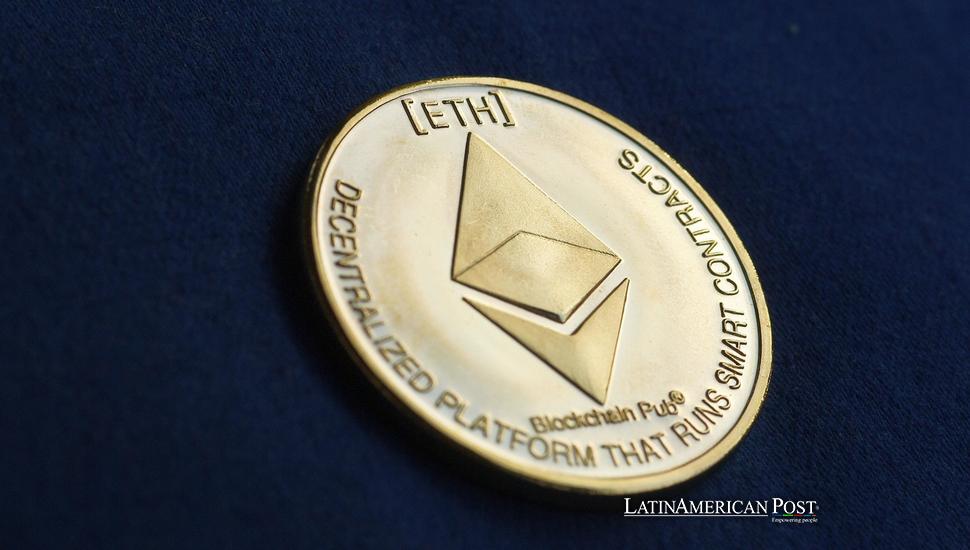Ethereum’s Role in Tokenized Assets and Securities

From Pilot Projects to Production Rails
Tokenization—the issuance and lifecycle management of real-world assets (RWAs) and securities on a blockchain—has shifted from concept to deployment. Institutions are no longer asking whether distributed ledgers can support regulated assets; they are designing workflows that combine on-chain programmability with off-chain legal frameworks. Among public networks, Ethereum stands out as the primary settlement platform, with mature developer tooling, audited standards, and a deep liquidity and service ecosystem. This article explains why Ethereum has become the gravitational center for tokenized assets and securities, how the tech stack interlocks with compliance, what risks remain, and how issuers and asset managers can implement robust programs.
Why Ethereum?
Three characteristics explain Ethereum’s central role:
- Programmability and standards: A rich set of token and compliance standards (ERC‑20, ERC‑721/1155, ERC‑1400 family for security tokens, ERC‑3643/T‑REX for regulated transfers, ERC‑4626 for tokenized vaults) provides interoperable building blocks for issuance, transfers, and corporate actions.
- Ecosystem depth: Qualified custody, staking-as-a-service (for treasury ETH), on-chain analytics, oracles, identity/attestation services, and L2 rollups form a production-grade stack around the base layer.
- Neutral settlement and composability: Public, credibly neutral infrastructure lets independent actors (issuers, transfer agents, exchanges, lenders) interoperate without bilateral integrations. This composability enables secondary markets, collateral reuse, and automated lifecycle management.
What Does “Tokenized Asset” Mean in Practice?
“Tokenization” can refer to several models along a spectrum of on-chain integration:
- On-chain representation of off-chain claims: Tokens represent legal claims to assets held by a trustee or SPV (e.g., money market fund shares, short-term treasuries, corporate credit). Transfer agents map wallet addresses to the share register.
Natively digital instruments: Instruments whose entire lifecycle—issuance, distribution, corporate actions—is encoded in smart contracts, with legal enforceability via digital securities frameworks.
- Asset-backed stablecoins and deposits: Tokenized cash legs (regulated stablecoins, tokenized bank deposits) that support delivery-versus-payment (DvP) atomic settlement with tokenized securities.
In each model, token logic encapsulates not just balances but also rules: who may hold them, when transfers are allowed, how distributions are paid, and how redemption or liquidation works.
Standards for Securities and Compliance
Security tokens need more than ERC‑20’s fungibility. Domain-specific standards encode compliance hooks and corporate actions:
- ERC‑1400 family (partitioned security tokens): Introduces partitions to segregate restricted shares, lockups, or jurisdictions; embeds transfer validation hooks to call on-chain/off-chain compliance checks.
- ERC‑3643 (T‑REX): Focuses on permissioned transfer logic via identity registries and compliance contracts, enabling KYC/AML and investor eligibility checks before transfers settle.
- ERC‑4626 (tokenized vaults): Standardizes yield-bearing vaults used by tokenized funds to account for shares and NAV processes.
These standards allow transfer agents and compliance providers to plug in via transfer manager contracts, enforcing rules for 144A/Reg D/Reg S markets, accredited investor lists, geofencing, and cap-table limits.
Identity, Attestations, and Oracles
Compliance depends on identity and trusted facts:
- DIDs and verifiable credentials (VCs): Wallets can present attestations from KYC providers or transfer agents proving eligibility without disclosing excess PII.
- Attestation services: Frameworks like Ethereum Attestation Service (EAS) allow standardized, revocable attestations (e.g., “address X is accredited until date Y”).
- Oracles: Deliver NAV, FX, benchmark rates, and corporate action events with cryptographic proofs and fallback logic to avoid single points of failure.
With privacy-preserving verification (e.g., zero-knowledge proofs), token contracts can validate compliance conditions (jurisdiction, accreditation, sanctions screens) without exposing raw identity data on-chain.
Cash Leg and Atomic Settlement
Tokenized securities shine when paired with on-chain cash for atomic DvP:
- Regulated stablecoins or tokenized deposits: Provide 24/7 cash settlement rails, minimizing counterparty risk and settlement latency.
- Smart-settlement: Escrow-like contracts enforce DvP across security and cash tokens in a single transaction boundary, reducing fails and reconciliation.
- Programmable distributions: Coupons, dividends, and redemption payments can be automated, pro-rated by record dates, and distributed on-chain with audit trails.
Public vs. Permissioned vs. Hybrid
Institutions choose topology based on regulatory posture, privacy, and interoperability needs:
- Public Ethereum: Maximum liquidity and composability; privacy addressed with selective disclosure, ZK techniques, or privacy-preserving modules.
- Permissioned chains (Ethereum-compatible): Fine-grained control, private data, and enterprise SLAs; but liquidity and ecosystem breadth are limited.
- Hybrid: Operate a permissioned environment for sensitive workflows while anchoring state (hashes, occasional settlements) to Ethereum L1/L2 for integrity and interoperability.
Scaling and Cost: L2s and EIP‑4844
Security-token workflows are data-heavy (KYC updates, corporate actions, frequent settlements). Ethereum’s scaling roadmap addresses cost and throughput:
- Layer 2 rollups: Optimistic and ZK rollups handle high transaction volumes with lower fees; finality is anchored to L1.
- EIP‑4844 (proto‑danksharding): Introduces blob data for rollups, significantly reducing data availability costs and enabling higher-throughput tokenization platforms.
- Account abstraction: Smart accounts (4337-style) support sponsored fees, batched actions, and recovery—critical for institutional UX and operations.
Privacy and Data Protection
Securities workflows intersect with sensitive data. Leading approaches include:
● Off-chain PII, on-chain proofs: Keep personal data off-chain; publish revocable attestations or ZK proofs of eligibility.
Selective disclosure: Use permissioned viewers or encrypted metadata for regulators, transfer agents, or auditors with access controls.
Event minimization: Avoid leaking trading strategies via granular on-chain events; batch settlements where appropriate.
Lifecycle Automation and Corporate Actions
Smart contracts transform static ledgers into active agents:
- Primary issuance and allocations: Whitelisted subscriptions, automated caps, and refund logic for oversubscription.
- Distributions: Automated coupon/dividend payments to holders of record at cut-off times; clawback rules for ineligible addresses.
- Governance and consents: On-chain voting with weighted stakes; time-locked actions and quorum enforcement.
- Redemptions and corporate events: Scheduled call/redemption windows; automatic processing with audited state transitions.
Interoperability With DeFi (With Guardrails)
Tokenized assets can integrate with lending, repo, or AMM venues to unlock liquidity—if compliance boundaries are preserved:
- Permissioned pools: Lending/AMM contracts that only admit KYC’d counterparties via allowlists, preserving transfer restrictions.
- Collateral frameworks: Risk parameters (LTV, haircuts, liquidation logic) tailored to instrument duration, liquidity, and legal seniority.
- Reporting: Programmatic access to position and risk data for custodians and regulators.
This is where Ethereum’s composability is most powerful: whitelisted contracts can interoperate while ensuring regulated boundaries remain intact.
Risk Map and Mitigations
- Regulatory uncertainty: Token classification and transfer-agent responsibilities vary by jurisdiction. Mitigation: design with modular compliance layers, operate in clear frameworks (e.g., private placements to qualified investors), and maintain off-chain legal contracts that reference on-chain records.
- Custody and segregation: Safekeeping of tokenized securities and cash tokens must align with client asset rules. Mitigation: qualified custody (MPC/HSM), segregated accounts, and reconciliations against on-chain proofs.
- Oracle and attestation risk: NAV, FX, or eligibility attestations can fail. Mitigation: multiple feeds, medianization, circuit breakers, and revocation flows. Privacy leaks: Public event logs can reveal sensitive behavior. Mitigation: ZK attestations, batching, and minimal on-chain metadata.
MEV and execution fairness: Order flow can be exploited by extractive strategies. Mitigation: private order flow, inclusion lists, and protocol-level MEV mitigation as the roadmap advances.
- Bridge and L2 risk: Cross-chain settlement introduces additional trust assumptions. Mitigation: conservative L2 selection, audited bridges, and clear settlement finality policies.
Implementation Blueprint for Issuers and Asset Managers
- Define the legal wrapper: SPV, fund, or corporate issuance; appoint a transfer agent; draft offering docs referencing on-chain controls.
- Choose the network topology: Public L1/L2, permissioned, or hybrid; specify privacy posture and regulator access.
- Select token standards: ERC‑1400/3643 for securities; ERC‑4626 for vault accounting; integrate transfer managers and compliance registries.
- Integrate identity/attestation: KYC providers, EAS schemas, VC issuers, and revocation lists.
- Design DvP settlement: Choose a regulated stablecoin or tokenized deposit; implement atomic settlement flows; define cash custody.
- Set oracle strategy: Redundant providers for NAV/benchmarks with signed data, medianization, and failsafes.
- Operational controls: Custody (MPC/HSM), policy engines, allowlists, monitoring, and incident response runbooks.
- Pilot and scale: Start with limited subscriptions and controlled secondary transfers; audit contracts; expand distribution and venues after post‑mortems.
Market Signals and Benchmarks
Institutions track on-chain issuance volumes, tokenized fund AUM, and permissioned pool activity alongside macro variables (real yields, dollar liquidity). While platform fundamentals are more relevant for tokenization than spot price, many dashboards still chart ethereum price as a base-currency reference for collateral management, VaR, and communications with investment committees. More directly relevant are L1 fees and EIP‑1559 burn, L2 data (“blob”) usage, identity attestations issued/revoked, and DvP settlement counts.

Where the Roadmap Is Heading
Ethereum’s trajectory aligns with tokenization needs:
- Pectra and account abstraction: Improved UX and security for institutional wallets, including policy-based actions and recovery.
Scaling toward danksharding: Cheaper data availability to support high-frequency, low-value events characteristic of securities operations.
MEV mitigation and inclusion lists: Fairer execution paths for institutional flows and reduced leakage of sensitive order intent.
- Privacy tooling: Production-ready ZK identity and selective disclosure patterns for regulated markets.
Case Patterns (Without Naming Names)
Patterns across early production deployments include tokenized cash-equivalent funds with on-chain share registries, short-duration treasury strategies with secondary liquidity for qualified investors, and permissioned credit pools with tokenized receivables. Common denominators: whitelisting at the smart-contract layer, DvP against regulated stablecoins, NAV oracles with governance safeguards, and hybrid reporting (on-chain proofs + off-chain statements).
Conclusion: Neutral Rails for Regulated Assets
Tokenized assets and securities are not about replacing law with code; they are about fusing contractual rights with programmable, neutral settlement mechanics. Ethereum’s mix of standards, identity and attestation frameworks, atomic settlement with tokenized cash, robust scaling via L2s, and rapidly improving privacy and UX make it the leading venue for institutions building tokenization programs. Issuers and asset managers can start small—piloting controlled distributions on a whitelisted L2, embedding compliance in token contracts, and anchoring state to L1 for integrity—then scale to broader investor bases and venues as controls mature.
The upside is more than operational efficiency: programmable distributions, reduced settlement risk, continuous audit trails, and interoperable liquidity across permissioned venues. The constraints—regulation, privacy, oracle design, and custody—are engineering and policy problems that the ecosystem is actively solving. As tooling standardizes and legal clarity grows, Ethereum’s role as the neutral backbone for tokenized assets and securities is poised to deepen—bringing the speed and composability of web3 to the rigor of capital markets.





